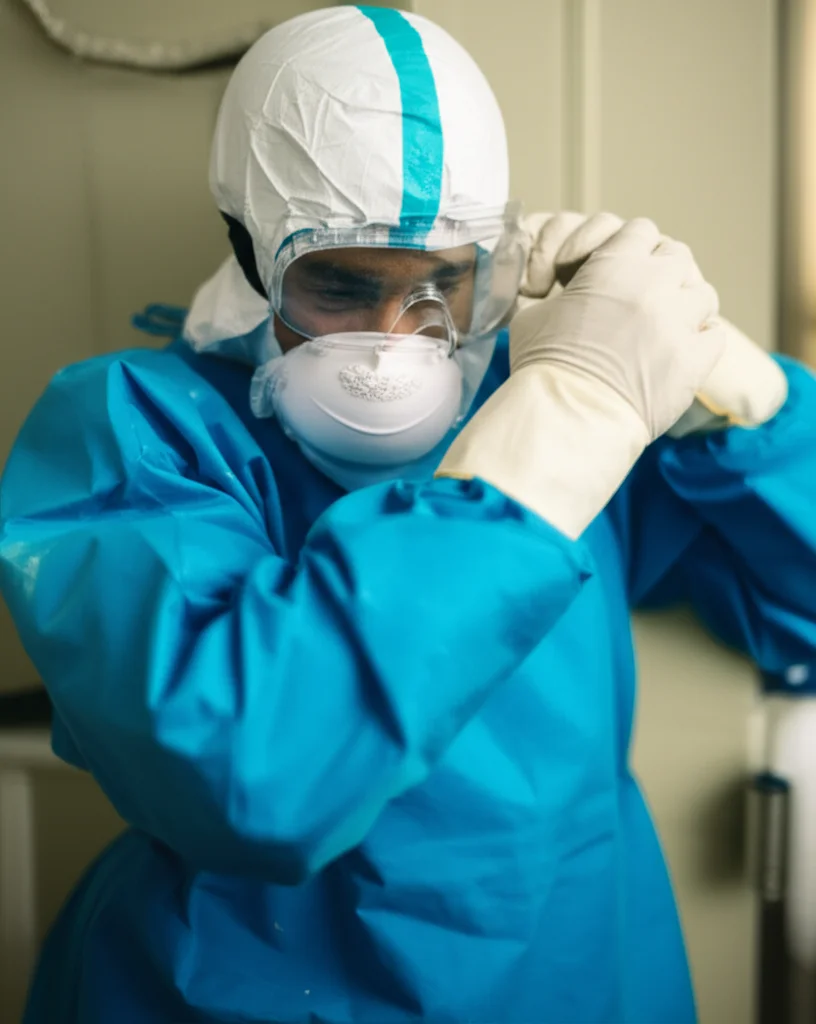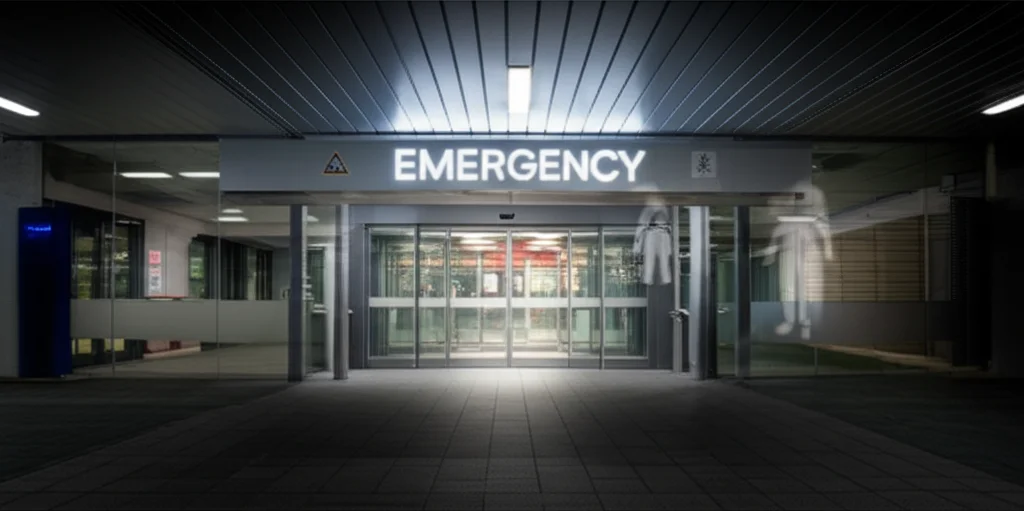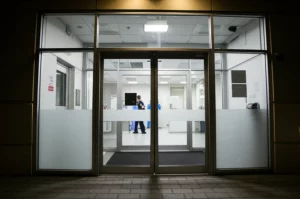Are German Emergency Departments Ready for the Unthinkable? A Look at CBRN Preparedness
Hey there! Let’s talk about something pretty serious, but something we *really* need to think about: what happens when the worst-case scenario hits? I’m talking about incidents involving chemical, biological, radiological, or nuclear (CBRN) stuff. You know, the kind of events that sound like they belong in a movie, but unfortunately, are a very real concern in our world today.
After everything we’ve seen lately – pandemics, conflicts, even past terrorist attacks – it’s become crystal clear that our emergency departments, the places we rush to when things go horribly wrong, need to be absolutely prepared for anything. And that includes dealing with people who might have been exposed to these nasty CBRN agents.
So, a bunch of folks decided to take a good, hard look at how ready German emergency departments actually are for this kind of chaos. They conducted a survey, asking the heads of EDs all across Germany about their plans, facilities, equipment, and training. The main findings were published before, but this article dives a bit deeper, especially looking at how different regions stack up. Let’s dig into what they found, because honestly, it’s eye-opening.
Why This Matters: The Threat is Real
Chemicals are everywhere in modern society, and infectious diseases have always been a part of life. Dealing with poisonings, burns, or infections is standard fare for EDs. But imagine a large-scale release – maybe from an industrial accident near a city, or worse, a deliberate attack. Globalization, urbanization, climate change, and ongoing conflicts mean the risk of pandemics and the use of CBRN weapons is, sadly, on the rise.
Here’s the kicker: in an accident, you often know what you’re dealing with pretty quickly. But in an attack? You might not even realize it’s a CBRN event at first. And you have to be ready for a massive influx of patients, especially those who can still walk. Think back to the Sarin attack in Tokyo in 1995 – over 5,000 people flooded nearby hospitals in no time! Our EDs need to handle not just individual cases, but mass casualties from CBRN incidents.
The focus on CBRN preparedness really ramped up after events like 9/11 and the Anthrax letters in the US. In Germany, the 2006 FIFA World Cup was a wake-up call, leading to concepts like DEKON-V (Decontamination of Injured), which focuses on decontamination happening *at the incident site*. A study back in 2007 found that, apart from Berlin hospitals, German hospitals were *not* well-prepared for CBRN events. This new study wanted to see if things have improved since then.
Checking the Pulse: How They Found Out
So, how did they figure out the current state of play? They put together an online questionnaire with 28 questions. It covered everything from the ED’s classification level and federal state to their alarm plans, alerting procedures, organizational setup, logistics, protective gear, staff training, and decontamination capabilities (process and capacity).
They also asked the ED heads to rank the support they felt they needed most for CBRN preparedness. The survey was sent out via email to the heads of emergency departments in 963 German hospitals through a joint directory run by two big German emergency medicine associations (DIVI and DGINA). They sent reminders and collected data from May to June 2023.
Out of the 963 hospitals contacted, 262 (27.21%) responded. This gave them a decent, though not massive, sample size to work with. They then crunched the numbers, looking at absolute figures and percentages. They even used something called “box-and-whisker plots” to show decontamination capacity – fancy stuff to visualize the data!
To compare preparedness across different regions and hospital levels, they picked three “tracer” questions: water supply at the decontamination area, wastewater handling, and availability of protective suits. They classified answers as either sufficient or insufficient preparedness based on certain criteria (like having hot/cold water, a plan for wastewater, and specific types of chemical protection suits). They used statistical tests to see if the differences were significant.

The Findings – A Mixed Bag (Mostly Not Great)
Alright, let’s get to the results. Of the hospitals that responded (235 provided data for this part):
- 80.43% had alarm and emergency plans for biological incidents.
- 49.36% had plans for chemical incidents.
- 34.47% had plans for radiological and nuclear incidents.
- A worrying 18.30% said their plans had nothing about CBRN events.
So, biological plans are relatively common (likely boosted by the pandemic, I’d guess!), but chemical, rad, and nuke plans are much less so. Good news is, 85% of EDs had a system to alert the doctor in charge if they saw a cluster of patients with suspicious symptoms – crucial for early detection.
When it came to isolating potentially contaminated or infected patients:
- 27.04% had a separate area with its own entrance/exit.
- 24.46% had a separate area, but without a separate entrance/exit.
- 35.62% could separate patient flows without a physical barrier.
- 12.88% said separation wasn’t physically possible.
While 87.12% said *some* form of isolation was possible, only a quarter had that ideal separate access point. The ability to add more isolation areas was possible in 55.17% of EDs.
Decontamination Woes: A Major Problem Area
This is where things get particularly concerning. Having a place to decontaminate patients *before* they enter the ED is absolutely vital to prevent spreading contamination and shutting down the hospital. But the survey found:
- Only 9.48% had a designated decontamination area *outside* the ED.
- 12.93% had one in a vehicle bay.
- 5.17% had a tent for it.
- 26.29% relied on external units (like the fire brigade) to provide a tent.
- 11.64% said decontamination was possible in an ED shower (not ideal!).
- 3.45% had a dedicated decon area *inside* the ED (also not ideal, risks contamination!).
- A staggering 42.67% had no designated area at all for decontamination.
And even where there was a spot, water supply was a big issue. Only 31.42% of those with a designated area had a water supply. Just 18.14% had both hot and cold water (warm water is important to prevent patients getting hypothermia during washing!).
Dealing with contaminated wastewater is another critical step. Only 9.25% collected and disposed of it separately, and 15.42% disposed of it in the regular sewer *after consulting* with authorities. A large chunk (35.68%) simply didn’t know how wastewater would be handled.
What about contaminated clothing? 45.81% had special containers, but 23.79% just used regular patient property bags. And changing clothes for decontaminated patients? Only 23.45% stocked them. Imagine being washed down and having nothing to wear!

Personnel, Protective Gear, and Training Gaps
Who’s actually going to *do* the decontamination? In 31.25% of EDs, it’s the already busy ED staff. Only a small percentage planned to call in extra ED staff (8.17%) or staff from other hospital areas (13.46%). The fire brigade was expected to handle it in 32.69% of hospitals (which, as the study points out, is problematic as they’ll likely be busy at the incident site). A worrying 24.04% had no designated personnel, and 18.75% said they couldn’t do decontamination at all.
Now, protective equipment. This is non-negotiable for staff safety. But only 27.61% of EDs reported having *sufficient* protective gear. The highest level of protection (gas-tight suits with independent breathing apparatus) was available in a tiny 0.87%! Most had infection suits (43.67%) or lower-level chemical suits. 12.23% had *no* protective suits at all, and 5.68% didn’t even know if they did.
Could they actually *perform* decontamination following a fixed scheme? Only 12.02% could do it for supine (lying down) patients, and 16.35% for ambulatory (walking) injured patients. Emergency-only decontamination was possible in 39.90%, but 25.96% had *no* decontamination capability whatsoever.
And training? It was all over the place – often rare or non-existent for things like recognizing a CBRN event, using protective gear (“donning and doffing”), and the decontamination process itself. This is crucial, because recognizing the threat early is key to initiating the right response and protecting the ED from secondary contamination.

State of Play Across Germany
The study also looked at differences based on the ED’s classification level (G-BA level) and federal state. Interestingly, there were no significant differences in preparedness found between the different G-BA levels based on the tracer questions (water, wastewater, suits). So, bigger, higher-level EDs weren’t necessarily better prepared in these key areas.
However, there *were* significant differences between federal states. Berlin and Hamburg, for example, appeared significantly better prepared in terms of water supply and protective suits. The study suggests this is likely because these states have conducted unannounced exercises and provided financial support for CBRN preparedness – showing that targeted action *does* make a difference.
What’s Needed? The Wishlist
The ED heads were asked what support they needed most. Their top requests were:
- Clear guidelines from authorities.
- Training by qualified personnel.
- Consultation on creating alarm and emergency plans.
After that, they wanted financial support and/or material, and advice on purchasing equipment. This pretty much mirrors the findings from the 2007 study – the needs haven’t changed much!
Why Aren’t They Ready? The Systemic Issues
So, why is preparedness still so patchy? The authors point to a few key reasons:
- Diffusion of responsibility: Who’s really in charge? Federal or state level? It’s not always clear.
- Lack of clear legal requirements: While hospital laws require emergency plans, they often don’t specify *what* needs to be in them regarding CBRN, and compliance often isn’t checked.
- Lack of financial support: Hospitals aren’t typically funded for this kind of preparedness through health insurance, and it’s seen as a structural cost.
- Cost pressure: Hospitals are under increasing financial strain, making preparedness feel like a burden rather than a priority.
This isn’t unique to Germany; studies from many other countries show similar issues. But improvement *is* possible. England, for instance, saw better preparedness after the government provided equipment and later passed a law making CBRN preparedness mandatory. Israel requires hospitals to conduct large-scale CBRN exercises every few years, which is why they seem much better prepared. The examples of Berlin and Hamburg also show that focused effort and funding can make a difference.

The Bottom Line (and a Few Caveats)
So, what’s the takeaway? Sixteen years after the last major study, most German hospitals are *still* not adequately prepared to handle casualties from CBRN incidents. This is a serious issue, not just for the public who have a right to adequate care, but also for the hospital staff who have a right to be protected at work.
Now, a quick note on the study itself. It was an online survey, relying on self-reported data from ED heads. The response rate wasn’t super high (27.21%), which means there might be some bias – maybe the EDs that *did* respond are more interested in this topic and potentially slightly better prepared than those who didn’t. If that’s the case, the problem might actually be *underestimated* by this study. Also, the comparisons between individual states are limited because some states had very few responses.
Despite these limitations, this survey gives us valuable insight. It confirms that there’s a significant gap in preparedness, particularly concerning decontamination facilities, water supply, wastewater handling, protective equipment, and training. The authors rightly conclude that there is an urgent need for systematic, nationwide improvement.
From their perspective (and frankly, mine too, after reading this!), preparedness for CBRN and other major incidents should be legally mandatory. The specific requirements should be clearly defined, and crucially, there needs to be financial support for hospitals to meet these standards. And it shouldn’t just be on paper – preparedness needs to be regularly checked through exercises by the relevant authorities. It’s time to stop hoping for the best and start preparing for the worst, for everyone’s safety.
Source: Springer







